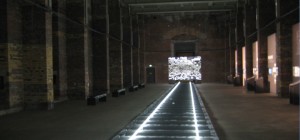Good Morning.
I’d like to thank Professor Wynn for inviting me to join you today to give my perspective on the various types of Concentration Camps operated by the Nazis. Let me first say that you are an intrepid bunch to invite me to perhaps ruin your lunch by sharing with you one of the greatest horrors in the history of the world.
I attended University to study Mechanical Engineering. In my professional life, I earned a living by answering the question…. How does that work? Or, how can I make this better?
But I’ve spent a lifetime searching for not just the answer to that question but also the more interesting question of WHY DID THAT HAPPEN? My interest has led me pick away at the historical threads of 20th century military history, slowly revealing one interesting story behind the story behind the story. Inevitably, this has led me to find all sorts of interesting connections and interactions between events. And the more angles from which you view an event, the more likely you are find a hidden truth about that event. This is what fascinates me about history.
There is a famous WW1 poem that I love written by a Canadian John McCrae. Its called In Flanders Fields. McCrae was writing about his friend who had just been killed in the war. There is one particular stanza that I’ve always been drawn to:
To you from falling hands we throw
The torch; be yours to hold it high
I think I must have been struck in the head with at least a glancing blow from that torch. As history students I hope you’ll do better than me and catch that torch. Go on to write a great history book or make a great documentary movie.
If you leave here with nothing else today, I hope to be able to convey to you the enormous scale of the effort that the Nazis invested in creating and operating these camps. Over the years, among my many travels all over the world, I have visited 38 concentration camps, forced labor camps and transit camps. Sadly, even though this sounds like a lot, it is just a fraction of the total as there were literally thousands of forced labor camps all over Germany, Austria, Czechoslovakia and Poland.
I know you are going to go to Warsaw and to Krakow this summer and you’re going to see some pretty awful things. As awful as these places are, I always tell people who are about to visit a camp that they should bear in mind that this perverted sociopathic fascination with murdering Jews ultimately got the Nazis working at cross purposes to their actual goal of winning the war. In many ways, the process of murdering 6 million Jews and countless others totally distracted large numbers of Nazis at critical times during the war and hastened their own demise. Just the act of using such huge amounts of their rail capacity for the purpose of transporting Jews to their death rather than using it to transport wounded soldiers back from the front or for transporting war material to the front cost them dearly.
And, keep in mind, had they not surrendered when they did, Berlin or Munich or Hamburg or all 3 might well have disappeared under a nuclear mushroom cloud. The creation of the Atomic Bomb and the huge engineering and manufacturing effort behind it would never have gotten off the ground had 4 Hungarian Jews, all working or trained at the Kaiser Wilhelm Institute in the early 1930’s, not been forced out of their jobs and ultimately out of Germany by the Nazi’s racial purity laws.
Eugene Wigner, Leo Szilard, Edward Teller, and John von Neumann all played a major role in convincing the US to invest the Billions necessary to build the bomb. Were it not for their efforts, it’s unlikely that Roosevelt would have ever been alerted to the potential of an Atomic Bomb nor of the potential the Germans might build one themselves.
At Nuremburg, not much is left of the old Nazi parade grounds except the reviewing stands that you see in old movie reels. Underneath that reviewing stand is a museum now which traces the rise of National Socialism in Germany. One of the displays there shows the number of dead at many of the larger camps as part of a display about the role of the Reichbahn in transporting victims to their ultimate death.
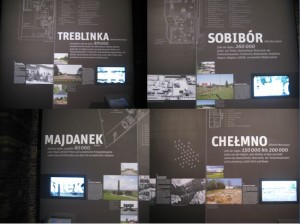
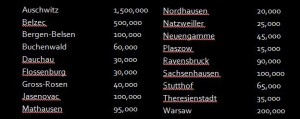
The numbers are both depressing and staggering
The Nazis built and ran 3 basic types of camps in addition to the many Ghettos that they created.
Transit Camps where people were forced to stay for some period time, sometimes weeks and sometimes years.
Forced Labor Camps of which there were thousands and in which the inmates were often starved or beaten to death or shot for the amusement of the guards. At least 1.5 million Russian POW’s, perhaps as many as a million Poles and millions of Jews were sent to these camps and many perished there in deplorable conditions.
And finally the Death Camps. Nearly all who entered these camps, were murdered within hours of their arrival. If they survived longer, it was because they were put to work helping to run the Camp as a Sonderkommando or in sorting the belongings of those being murdered. Beyond this, if you survived in a Death Camp for longer than this short time, it was because the camp was also being used as a Slave Labor Camp.
As the war went on, the lines blurred between the different types of camps and many of the larger Forced Labor Camps started installing crematorium to deal with the ever increasing numbers of dead bodies. Several even installed gas chambers.
But before we go too far, let’s go back to gain a perspective on how it all started.
I always jokingly tell my friends that every European history book should begin with the phrase,
FIRST THEY KILLED ALL THE JEWS THEY COULD FIND (COMMA), AND THEN THE REST OF THE BOOK
The history of WW2 is certainly no exception.
But as I’m sure you know, the evil that is anti-Semitism was not invented by Nazi Germany.
The fact is that anti-Semitism existed long before Nazi Germany and it has survived long after the last Nazi was killed in WW2.
European history especially is filled with episode after episode, in country after country, whenever things got bad, in times of bad crops, plagues, earthquakes, or whatever else happened that threatened a society, out came the knives and the local Jewish population was forced to flee or die trying.
So no, the Nazi’s did not invent anti-Semitism.
But it WAS the Nazi’s who figured out how to combine the worst of humanity and harness it to the industrial might of a modern nation to commit the greatest of genocides. This is what separates the Holocaust from all other genocides.
The end of the 19th and the beginning of the 20th century was an age of enlightenment. Literally. The electric light bulb itself, cars, the telephone, and flying machines came pouring out of modern scientific creative minds. The pace of modernization was taking off.
Jews in most of Western Europe were highly assimilated into the cultures of where ever they lived. Anti-Semitism existed but Jews weren’t being murdered in the streets. Some Jews felt they needed to convert to Christianity and Christianize their name to succeed in their chosen fields. But most did not.
Synagogues all over Europe were being built to look like the great cathedrals.
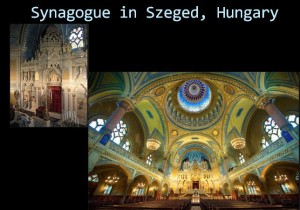
Jews wanted to be seen praying in the exact same style of buildings that their Christian neighbors attended. In Germany, every large city had a beautiful Synagogue near its center, often close to the main cathedral.
The relative safety of Western Europe began to change as a result of WW1. Life in the trenches was awful and deadly and anti-Semitism on both sides of the line flourished. My mother has a letter from 2 of her older cousins who were from Montreal who wrote about terrible anti-Semitism in the British and Canadian trenches. So it wasn’t just some sort of “German thing”.
But when Germany lost WW1, the anti-Semitic temperature began to rise as the fable of the “Stab in the Back” was born.
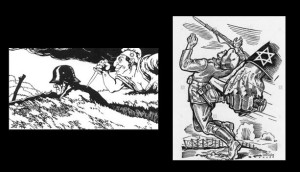
The Kaiser and the head of the German High Command, General Ludendorf, needed a scapegoat to blame for the loss of the war. The Jews were a natural target.
So a fable was born. Germany lost the war because the German Army was stabbed in the back by the home front. And on the home front as the war was winding down, the Kaiser had been forced to abdicate and the Weimar government came to power. It was this government that signed the November 1918 armistice along with its crippling terms. And it was this government which the Nazi’s vilified as being run by Jews, and Bolsheviks who were often, one and the same.
The 1920’s political scene in Germany was filled with endless plots and counter plots to over throw the government. Political assassinations were common place.
Into this chaos enters Adolph Hitler In 1923 Hitler would attempt a coup in Munich but it failed and Hitler was tossed in jail where he had the time to write a rather lengthy and in depth plan on how he was going to kill all the Jews and take over the world. He called it Mein Kampf or My Struggle.
After his release from jail, Hitler became even more bombastic. He spoke out against the Treaty of Versailles and equally against both capitalism and communism. Both were Jewish conspiracies. Jewish bankers and Jewish Bolsheviks were all screwing Germany.
But don’t get excited. He wasn’t the only one. Henry Ford, yeah, the head of Ford Motor Company, and Charles Lindbergh, the famous flyer, did the same thing. And lots of others too.
But the violent politics of the 1920’s in Germany became a real breeding ground for anti-Semitism.
Hitler came to power in 1933 with the promise to stop the chaos in German politics, overturn the harsh terms of the Treaty of Versailles and make Germany great again.
In June of 1934, Hitler decided to get rid of all of his political opponents and in one night, about 80 of his rivals in the National Socialist movement were murdered in what became known as the Night of the Long Knives..
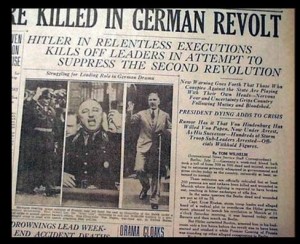
Thousands more were rounded up and thrown in three hastily built forced labor camps. Dachau (outside Munich) Oranienburg (north of Berlin) which became Sachsenhausen and, Esterwegen (south of Hamburg) which became known as Neuengamme.
This was the start of it all. Jews weren’t the first inmates. It began with the incarceration of Hitler’s political enemies. Some of them were murdered in these camps but most were just forced to break big rocks into little rocks. The Nazis wanted to humiliate them and give them a good attitude adjustment. Most were eventually released after they saw the “error of their ways” and pledged their allegiance to Hitler.
This made room for the next wave of people sent to these forced labor camps. Nazi thugs began roaming the streets. Jews who were just in the wrong place at the wrong time were scooped up and sent to these camps. They were joined by Communists and Bolsheviks and Gays and anyone who got in the way of roving groups of Nazis as they marched up and down the streets of Germany’s cities, big and small.
At around the same time, the various German Churches were brought under the Nazi boot when Ludwig Muller was appointed as head of the Reich Church. As a result of its Nazification, number of Protestant Ministers and Roman Catholic Clergy began to speak out. They too were rounded up and tossed in the camps. Among these clergy was a man who would become famous for a poem that he wrote. Martin Niemoller protested against the Nazification of the German Lutheran church. He quit and helped form a new church called the Confessing Church. He was promptly arrested and thrown into Sachsenhausen and then Dauchau. He would spend almost every day from 1934 to 1945 in either one those two camps.
You may know his famous poem:
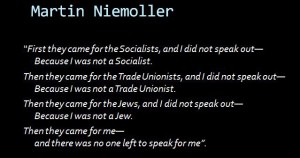
He wrote the poem after the war. His poem and he himself might have been a lot more famous had it been for one thing. Before Hitler threw him in jail for opposing the creation of the Reich Church, Niemoller was himself, a rabid anti-Semite.
As the 1930’s rolled onwards, the Jews in Germany saw more and more repressive laws taking away their rights as German citizens.
In November of 1938 things took a huge turn for the worse. On November 9, Kristallnacht occurred. More than 7500 Jewish businesses were looted and torched. Nearly 1,000 synagogues were burned across Germany and Austria and around 30,000 Jews were tossed into the forced labor camps.
The list now included:
Dachau (1933)
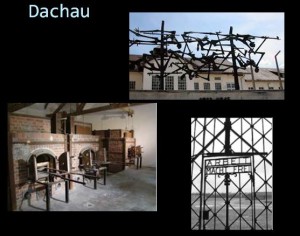
Sachenhausen (1936)
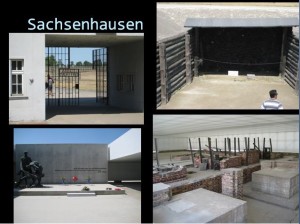
Buchenwald (1937)
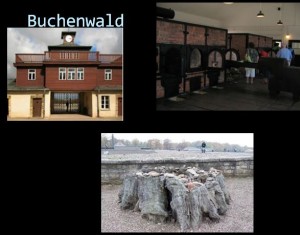
Neuengamme (1938)
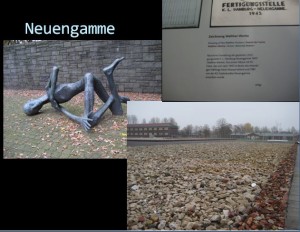
Flossenburg (1938)
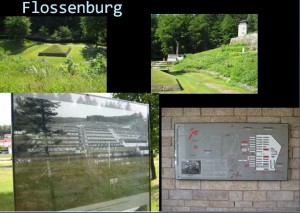
and Mauthausen (1938)
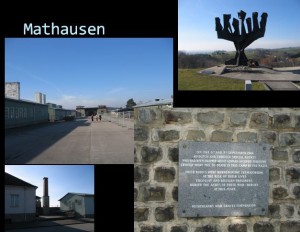
At the first 3, inmates were forced into hard labor. Basically, they were forced to break large rocks into small rocks solely with the purpose of humiliating them. But Flossenburg and Mauthausen were built at granite quarries and inmates here were forced to dig out the granite which was being used to build the Nazi edifices in Berlin and Nuremburg and other places around Germany.
And then the war started and things would only get worse.
But not initially as you might think.
As bad as things got for Germany’s 550,000 Jews, they were worse for the mentally and physically handicapped. The Nazis began a Euthanasia program to murder these people. At 6 or 7 locations around Germany around 70,000 infirm Germans were gassed using carbon monoxide or carbon dioxide generated by pumping in the exhaust from diesel engines into sealed chambers.
One of these places is called Sonnenstein, south of Dresden.
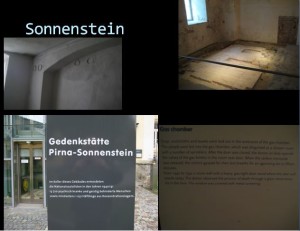
Some 14,000 people were gassed here. The very same people who ran the T4 euthanasia program would later all be involved in the gassing of millions in the death camps of the Holocaust. Christian Wirth, Franz Stangl, and many others would eventually go on to employ Zyklon B as a more effective killing agent over carbon monoxide and diesel exhaust at the death camps to be built in Poland. Nearly all of these mass murderers who ran the Nazi death camps of WW2 got their start working on this T4 program.
But the murder of Jews didn’t start with gassing. There were really three phases to the Holocaust.
Death by bullets.
Death by forced labor and starvation and finally..
Death by gassing.
And it all really got started when the Germans attacked east into Russia in June of 1941. As the German Army rolled over Poland hundreds upon hundreds of thousands of additional Jews found themselves behind German lines. Behind the blitzkrieg of the Wehrmacht came large groups of Einsatzgruppen. Basically they were SS death squads who forced Jews to dig big pits and then they shot them, one by one. Tens of thousands were slaughtered like this. It was done in public. It was done often with the local non-Jews watching. Often the local population was happy to welcome the Germans and be rid of the Russians. Most of the people in the Baltic countries, Poland and the Ukraine hated the Russians with a passion. Many thought the Germans would be an improvement. And more than just a few were happy to help the Germans murder the local Jews. The Germans wanted peace behind their front lines as they surged towards Moscow and they were not stupid. While the Germans were going to take all the Jew’s valuables (if they had any), the Germans had no use for the property of dead Jews. So the locals ended up living in the homes of their Jewish neighbors. And in many cases, they still are. This was a basis for the Faustian deal often made between the Germans and the locals to gain their cooperation.
But after awhile, even the most ardent Nazi became affected by the brutal process of murdering men, women and children one by one all day, every day by shooting them in the head. Drinking got out of hand and discipline suffered. Himmler and Hitler concluded that they needed a better way. So many Jews were coming under German control that they started herding them together into confined areas in dozens of towns and cities behind the German lines. These became Ghettos where overcrowding, non-existent sanitation and starvation became commonplace.
At the same time, German industry was suffering a critical labor shortage of immense proportions. The Wehrmacht, the Kreigsmarine, and the Luftwaffe were short of everything and German industrial production was limited as all the men were either volunteering for the war or being conscripted. No way could Germany win this war unless German industry could pump out armaments faster than the allies and this meant they needed laborers. And lots of them.
A guy named Fritz Todt became the Armaments Minister and he came up with the idea of using slave laborers to supplement the German workforce. Todt was killed in early 1942 in a plane crash and Albert Speer took over. As a result of their efforts, more than 6.5 Million forced laborers were farmed out to thousands of companies, big and small.
Oskar Schindler is an example of one of these local businessmen who took advantage of this labor pool for his enamel pot factory in Krakow.
The laborers included Jews, Russian POW’s, Poles, and other people grabbed off the streets in cities across Europe.
Millions died.
Oddly enough, the Nazis worked at cross purposes here. They needed laborers to make war materials but also were fanatically focused on starving them to death or shooting them. Imagine the stupidity of training workers to run complicated equipment and then starving them to death. Only to start all over again with another worker and then also stave him or her to death as well.
In thousands of sub-camps across Germany, Austria, Poland and the Czechoslovakia, companies, big and small were using slave laborers. They would work them until they starved to death or died of disease and then return the dead to the main concentration camp for replacements. To get rid of the bodies, the Nazis had to build crematorium to keep up with the endless flow back to the main camps. This is why most of the camps initially built crematoriums, and, by the way, the SS charged 5 RM per slave laborer per day. It was big business for the Nazi Party.
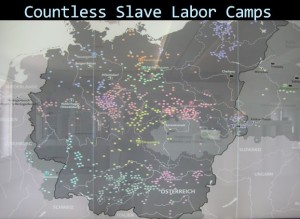
Almost every Nazi concentration camp and several of the main death camps were involved in this activity.
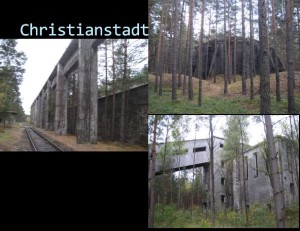
Some of the sub camps were huge. This is the forced labor camp at Christianstadt which is north of Gross-Rosen. Today it sits in the middle of a forest. If you didn’t know it was there, you could drive along the road next to the forest 100 times and never know what lurked behind the trees. The buildings are still there. All the equipment was stripped after the war by the Russians and taken to Russia. The camp measured at least 2 miles x 3 miles and there were dozens and dozens of concrete buildings, many with ceramic tile on the floor. The presence of ceramic tiling on the floor meant acids were being used and sure enough, Christianstadt was home to a giant IG FARBEN explosives factory. At least 20,000 died here.
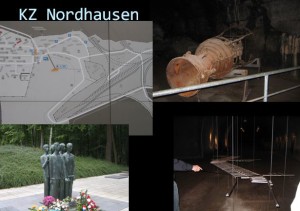
At Nordhausen the Nazis tunneled deep into the Hartz mountains so that they could build V1 and V2 rockets underground, out of reach of the endless bombing raids of the Allied Air Forces. Thousands died digging the tunnels and even more died in building the rockets.
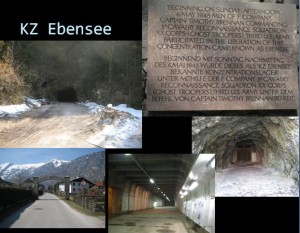
In Austria inside a mountain at Ebensee they built a underground oil refinery. Again, slave laborers were forced to dig seven tunnels that extended more than one mile into the granite rock. The Nazis installed a complete oil refinery under the mountain including digging air vents that exited the mountain some 300 feet above the tunnels that were dug at ground level. Rail cars of oil were brought from oil fields near Vienna.
Again, thousands died in digging the tunnels. But in this case, the allies kept bombing the trains that were bringing oil to Ebensee so the Nazis never refined even 1 gallon of gas. After the war, the US Army ran the refinery for several years until enough above ground refinery capacity could be rebuilt in Germany.
Lets go back and take a look at a few Transit Camps.
Before being shipped off to the forced labor camps or sent to a death camp, Jews were often thrown into what became known as a transit camp. Its not a coincidence that the main “transit camps” were located in Holland, Vichy France and in Czechoslovakia. Each of these places was run by a government that was collaborating with the Nazis. Part of the deal was for the local Jews to be placed into these camps and not just immediately murdered. That made it a little bit more palatable for the collaborating government that must have had some qualms about watching their countrymen carted off straight away to the death camps.
However, while inside these camps, the inmates were also forced to make products for the German war effort.
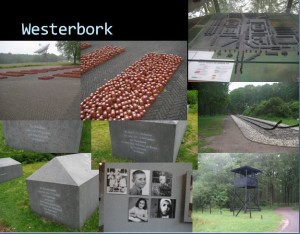
In Holland, the main transit camp was called Westerbork. This is where Anne Frank and her family and their friends were all sent after they were discovered hiding in Amsterdam. 100,000 Dutch Jews and 5,000 German Jews like Anne’s family were held here. If you were a Dutch Jew, you had the dubious distinction of having the worst chances on a per capita basis to survive the war of any country in Europe. By wars end, everyone had been deported to a death camp in Poland.
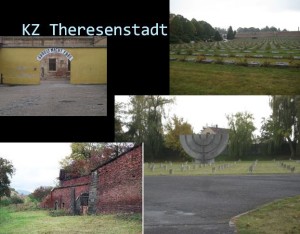
In Czech, all the Jews of Prague and from around the country were thrown into an old walled fortress built by the Hapsburgs in the 1780’s, called Theresienstadt. Nearly 150,000 Jews passed through there. Some stayed for years. Others, only for a short time. Many ended up in Auschwitz (about 90,000) when, in 1944, the Germans began large scale deportations. About 30,000 died at Theresienstadt and at a forced labor camp just north of Theresienstadt. Only a few thousand survived. Not only Czechs were sent there but also Jews from Austria, Germany, France and Holland.
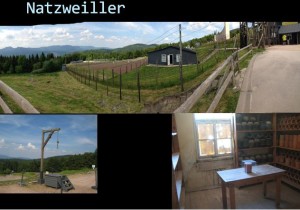
In France, the Nazis and their collaborating Vichy friends ran a transit camp called Natzweiler, near Strasbourg in the Alsace part of France. Into Natzweiler were thrown Jews rounded up by the Vichy and also members of the French resistance; and even captured SOE parachutists from England.
Some 52,000 French Jews and resistance members passed through Natzweiler. 22,000 died at the camp. As the allies approached in 1944, the inmates were marched across Germany in a death march that led them to Dachau.
In eastern Europe, other than Theresienstadt, the Nazis didn’t bother with transit camps so much. Instead, they just herded the Jews into Ghettos. There was no need to hide Nazi brutality in Poland, the Baltic Republics, Ukraine and the area we now call Belarus.
The inhabitants of the Ghettos were also forced into slave labor and they were also a source for companies to grab Jews for local factories. They became cesspools of starvation and disease. Thousands died and collapsed along the streets before most of them were deported to one of the death camps.
But starving Jews to death was still insufficient for the Nazi sociopaths. So in January of 1942, Reinhardt Heydrich who would later be assassinated in Prague, Adolf Eichmann who met his end at the end of an Israeli rope in 1962 and 14 other Nazi functionaries met at a fancy villa on a lake outside Berlin called Wannsee.
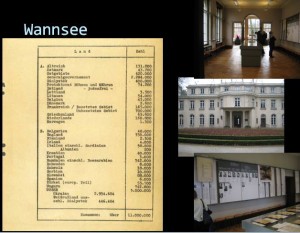
Here they hatched a plan the likes of which the world had never seen before and is unlikely to ever see again. To rid Europe of its Jewish problem they decided to harness the full power of German industrial design and marry it to the psychopaths from the euthanasia program. What they came up with was the construction of 5 death camps around Poland whose sole function was to take arriving Jews and murder them with poison gas.
These camps were Chelmno, north of Lodz
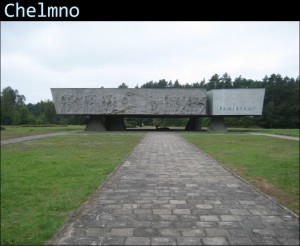
Majdanek, outside Lublin
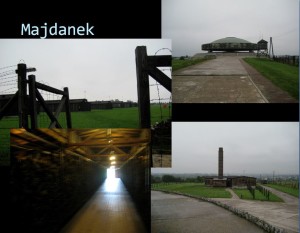
Treblinka on the rail line from Warsaw to Bialystok
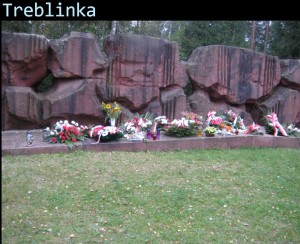
Sobibor, on the River Bug south of Brest
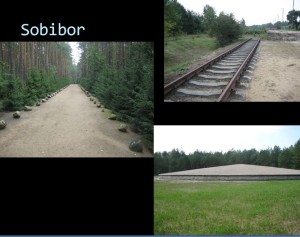
And Belzec, also on the River Bug but further south and closer to the Lvov area.
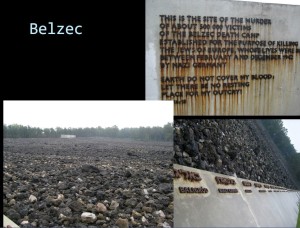
Chelmno, north of Lodz was built first. Here, arriving Jews from the Lodz ghetto were off loaded from rail cars and into trucks which had been modified to send the exhaust from the engines into the back of the sealed truck. The truck would drive a few miles up the road to the main camp where the bodies were cremated. It didn’t work very well and lots of victims still needed to be shot after the doors of the sealed truck were opened. We can call this process murder 1.0.
Murder 2.0 was implemented at the rest of the death camps. Zyklon B manufactured by a company called Degussa and developed from a cyanide based pesticide proved very deadly. Jews that arrived at Treblinka, Sobibor, and Belzec found no barracks for slave laborers. It was short walk from the train station to the showers which were really gas chambers. Majdanek had quite a few barracks for slave laborers but it too soon became a major death camp.
And soon Auschwitz was added to this list of death camps but it got its start as a camp for Polish political prisons. Soon the Nazi’s added Birkenau I which was operated like Majdanek and had barracks for slave labor as well as a process that just included the murder of thousands upon thousands of arriving Jews. Birkenau II, built a few miles from Birkenau I was going to be a huge slave labor camp for making synthetic fuel and synthetic rubber. But IG Farben never got it working. Auschwitz is so well known today because of its location. Because it is in SW Poland, the Nazis were able to keep it operating the longest as the Russians overran the other death camps in their advance from east to west across Poland.
All the death camps were put into operation after the Wannsee Conference. Treblinka ceased operating by the end of October 1943, Sobibor about the same. Both of these camps had uprising and prisoner escapes after which the Nazis decided to shut them down, tear it all down, and plant trees to try to cover up the evidence. Belzec only operated for about 10 months in 1942 but still about 500,000 Jews were murdered there. Only 1 is known to have survived.
This left Auschwitz and Majdanek in operation for 1944 and 1945 when the murder rate was even higher. Majdanek was liberated by the Russians in mid July of 1944, just 45 days after D-Day. Auschwitz was only liberated by the Russians on January 27, 1945.
In each case, as the Russians approached one of the camps, the inmates were forced on a death march to other camps away from the advancing Russian and towards other camps inside Germany. The Germans didn’t want to lose their labor force. They still thought they were going to win the war.
Thus in late 1944 and into 1945, Buchenwald, Flossenburg, Dachau, Bergen-Belsen, Neuengamme, and Ravensbruck all began receiving large numbers of nearly dead and dying Jews from the other camps. Disease and starvation was rampant and people died by the thousands. Anne Frank and her sister were part of this as they had been marched from Auschwitz to Bergen-Belsen where they died in Typhus epidemic just a few weeks before the camp was liberated in April of 1945 by the British Army.
After the war, an attempt was made to round up the sociopaths who ran these death camps. Some were hanged. Some were jailed. But by and large, the majority of those with blood soaked hands mostly got away with it.
A few even made photo albums of their sadistic escapades.
Jürgen Stroop was responsible for burning down the Warsaw Ghetto. After it was over in May of 1943, he wrote a report that included many of the most iconic photos of the Nazi barbarism. You may have seen some of them.
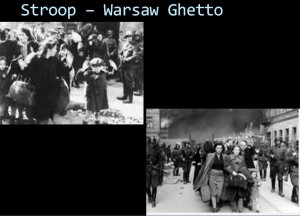
Stroop has hung in 1952 in Warsaw.
At Nuremburg and in Dresden, after the war, the Allies put 23 doctors who were involved in the Nazi euthanasia program on trial. 16 were found guilty and executed and were hung in 1948. The ring leader, Karl Brandt, was among them denying that he had done anything wrong right up until the moment when they put the hood over his head just before he was hanged.
Rudolf Hoss the guy, who ran Auschwitz, was tried in Poland found guilty and hung at Auschwitz.
Irmfried Eberl who was put in charge initially at Treblinka, was arrested in 1948 and hung himself just before his own trial.
Franz Stangle, his successor escaped to Argentina where he lived in the open for many years. He was tracked down by Simon Wiesenthal and eventually extradited back to Germany to stand trial. He died in prison in 1971 not that long ago and proclaiming to the end… I was just doing my duty. Stangle also ran Sobibor for awhile and under his commands nearly a million people were murdered.
Belzec was run by Christian Wirth. Wirth eventually ended up actually fighting in the war. He was killed near Trieste.
But thousands got away with murder. In this case, mass murder.
